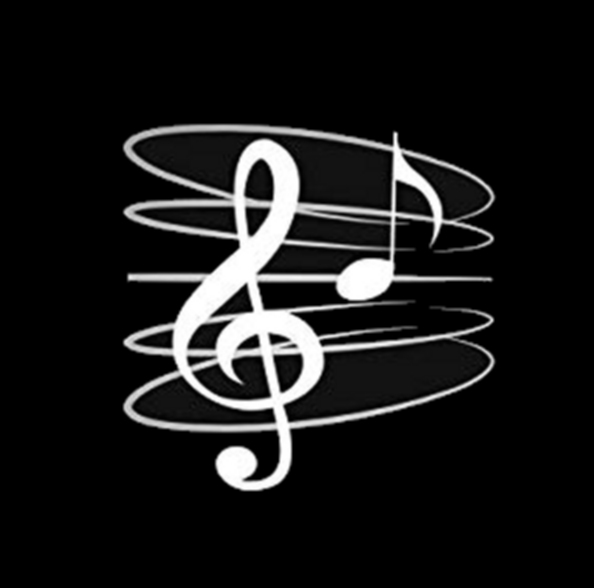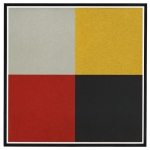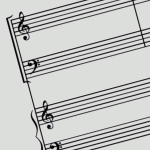Arranging Exercise: Homophonous Versus Lead and Accompaniment
 In writing an arrangement, a basic choice is what the structure of the piece will be. By this, we mean what role the different parts play in the piece. You can write all parts homophonously. Or you can let one of the parts sing the lead and have the other parts sing accompanying lines.
In writing an arrangement, a basic choice is what the structure of the piece will be. By this, we mean what role the different parts play in the piece. You can write all parts homophonously. Or you can let one of the parts sing the lead and have the other parts sing accompanying lines.
Much can be learned from writing a single song using these two structures. This helps you to clearly see the effect of the techniques on the sound of the piece. In this blog there is an arranging exercise for that. The song we are using is Fields of gold by Sting. The exercise is to arrange the notes twice. First, in four parts, satb homophonous. Second, in five parts, in which the melody is sung by soprano 2 and the other four part sing homophonou accompaniment.


 For singers, it is nice to be able to use their full vocal range. A singer who may only sing low notes, tends to develop a very dark sound. And reversedly, a singer who has to sing high notes all the time, tends to lose warmth. When the voices within a choir vary in color, blending gets less and intonation gets harder. Apart from that, it is much more challenging and accomplishing for singers if they can use their full range.
For singers, it is nice to be able to use their full vocal range. A singer who may only sing low notes, tends to develop a very dark sound. And reversedly, a singer who has to sing high notes all the time, tends to lose warmth. When the voices within a choir vary in color, blending gets less and intonation gets harder. Apart from that, it is much more challenging and accomplishing for singers if they can use their full range. Now and then students from the conservatory ask me what settings I’m useing for the layout of my scores. In the past twenty years I slowly developed my view on that. I’m happy to explain which choices I make.
Now and then students from the conservatory ask me what settings I’m useing for the layout of my scores. In the past twenty years I slowly developed my view on that. I’m happy to explain which choices I make. The time signature used most often in pop and jazz is four-four time. But in writing music, musicians often choose the note values in a bad way, so the backbeat isn’t right. According to drummers, the backbeat consists of the accents on the second and fourth beat of a four-four time. If you notate a piece of music, you should choose your notes in such a way that the second and fourth beat coincide with the backbeat.
The time signature used most often in pop and jazz is four-four time. But in writing music, musicians often choose the note values in a bad way, so the backbeat isn’t right. According to drummers, the backbeat consists of the accents on the second and fourth beat of a four-four time. If you notate a piece of music, you should choose your notes in such a way that the second and fourth beat coincide with the backbeat. There are a lot of choirs with only female singers. Writing for such choirs is challenging. How do you go about writing for women’s voices? Is it possible to take an arrangement for men and simply sing it an octave higher? And if you do, does it sound the same as the men’s version? Or do other rules apply to arranging for female voices?
There are a lot of choirs with only female singers. Writing for such choirs is challenging. How do you go about writing for women’s voices? Is it possible to take an arrangement for men and simply sing it an octave higher? And if you do, does it sound the same as the men’s version? Or do other rules apply to arranging for female voices? Homophonic arrangements are worthwhile for a choir. In such scores, all choir members sing the same lyrics at the same time. In this way, there is a strong connection between the singers and the choir will have a strong unified performance on stage. Below are the advantages of homophonic pieces.
Homophonic arrangements are worthwhile for a choir. In such scores, all choir members sing the same lyrics at the same time. In this way, there is a strong connection between the singers and the choir will have a strong unified performance on stage. Below are the advantages of homophonic pieces. Most arrangers that I know, use music notation software like Sibelius or Finale, to make scores look nice. But most of the writing we tend to do at the piano. (At least, I hope so, because arranging behind the computer is a bad habbit.) Thus, writing for choir starts on paper.
Most arrangers that I know, use music notation software like Sibelius or Finale, to make scores look nice. But most of the writing we tend to do at the piano. (At least, I hope so, because arranging behind the computer is a bad habbit.) Thus, writing for choir starts on paper. As an arranger, I try to make my scores look as beautiful as possible. I really like a good layout. My arrangements are made with the music notation software Finale. But I definitely do not use its standard layout, because for me that layout looks rather bad.
As an arranger, I try to make my scores look as beautiful as possible. I really like a good layout. My arrangements are made with the music notation software Finale. But I definitely do not use its standard layout, because for me that layout looks rather bad. Some musicians tend to write all extensions after the first extension between parenthesis. Thus, they would write
Some musicians tend to write all extensions after the first extension between parenthesis. Thus, they would write